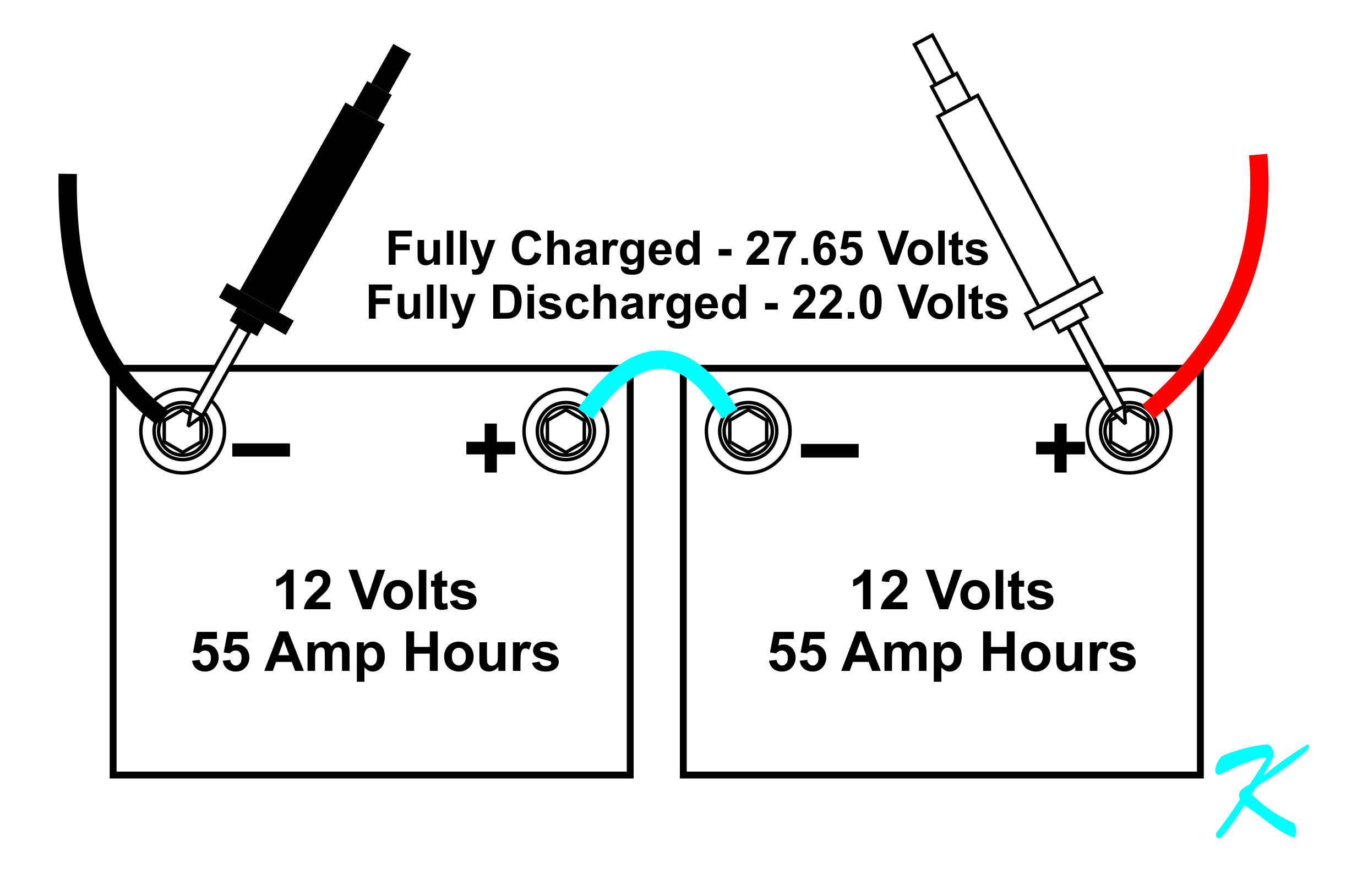Things to remember about testing batteries:
False Low Reading - The Amp Hour Tester works by testing the conduction of the battery. To measure the conduction, it allows a high current to pass from the battery to the tester. I have tried this. If the connections to the battery are even a little bit less than perfect, the Amp Hour Tester will show much lower amp hour readings because the reduced conduction of the battery terminals decreases the total conduction of the battery.
Since larger amp hour batteries have to provide greater current, the tester has to draw greater current. More current means the connections have to be better. Make sure the tester is making very good connections with the batteries.
Calibration of the Amp Hour Tester - In the instructions for the tester, you are supposed to use a brand-new battery of the same exact make and model of the battery you are testing. Make sure the new battery is fully charged. Measure its amp hour rating and adjust the amp hour tester to read the proper amp hours. Life in the real world does not allow you to keep new 55 Amp Hour batteries with you - especially batteries that are the exact make and model of the batteries you are testing. That means you will never be able to make a proper measurement.
- If you are testing 7-amp hour batteries, you have to calibrate the meter using a brand new 7 amp hour battery
- If you are testing 8-amp hour batteries, you have to calibrate the meter using a brand new 8 amp hour battery
- If you are testing 18-amp hour batteries, you have to calibrate the meter using a brand new 18 amp hour battery
- If you are testing 25-amp hour batteries, you have to calibrate the meter using a brand new 25 amp hour battery
- If you are testing 33-amp hour batteries, you have to calibrate the meter using a brand new 33 amp hour battery
- If you are testing 55-amp hour batteries, you have to calibrate the meter using a brand new 55 amp hour battery
In other words, you, the technician, cannot count on the meter to be accurate. You, the technician, have to interpret what you read on the meter and decide if the batteries are good.
Accurate Testing
During a power blackout, the batteries are designed to keep the fire alarm system working for 24 hours without an alarm, and then sound the alarm for 5 minutes. Then again, if this is a voice evacuation system, the system has to continually sound the alarm in the whole building for 15 minutes.
- The Amp Hour Tester you are using will only give you a general idea of how good the batteries are. You have to interpret the readings.
- Methods suggested in the NFPA are just as poor; you still have to interpret the readings.
The only really accurate tester you can use to see if the batteries will work for the "24-hour-blackout-and-then-sound-the-alarms function of the batteries" is the fire alarm system itself. If, at the end of the whole test, the batteries still have 22 volts, then the batteries are good.
If, at the end of the 24-hour-blackout-and-then-sound-the-alarms test, the batteries are less than 22 volts, there are three possibilities:
- Probable - The batteries are bad and need to be replaced
- Possible - The batteries are sized too small and need to be sized bigger
- Rare - The charger is bad
<
br>
Douglas Krantz
